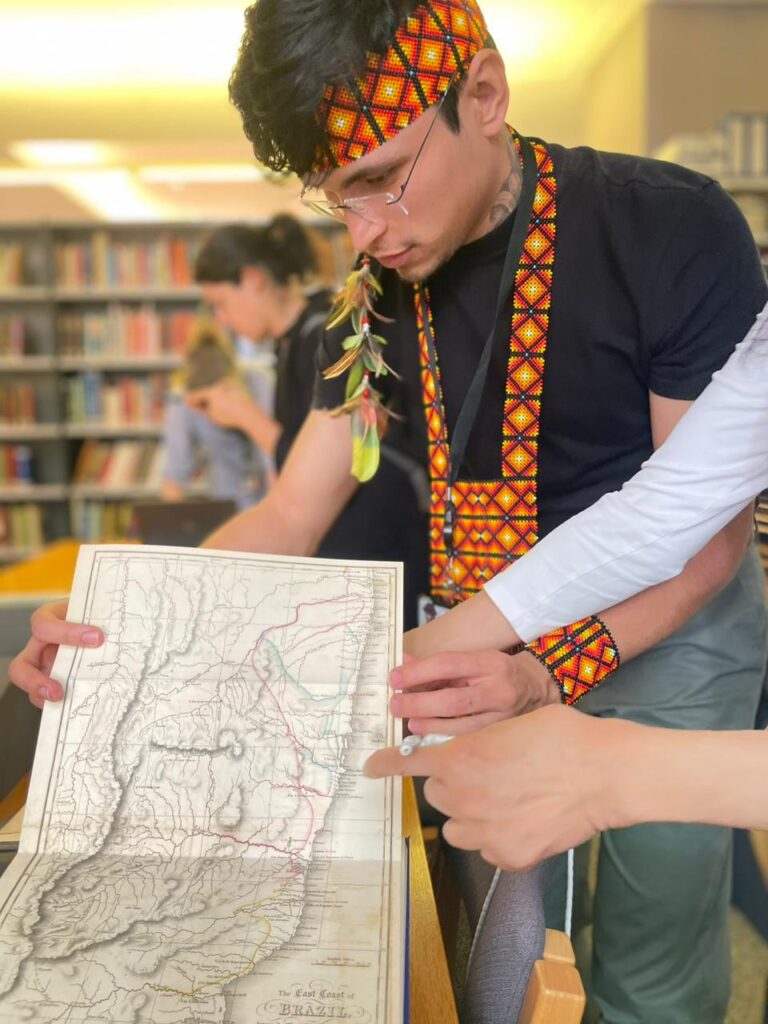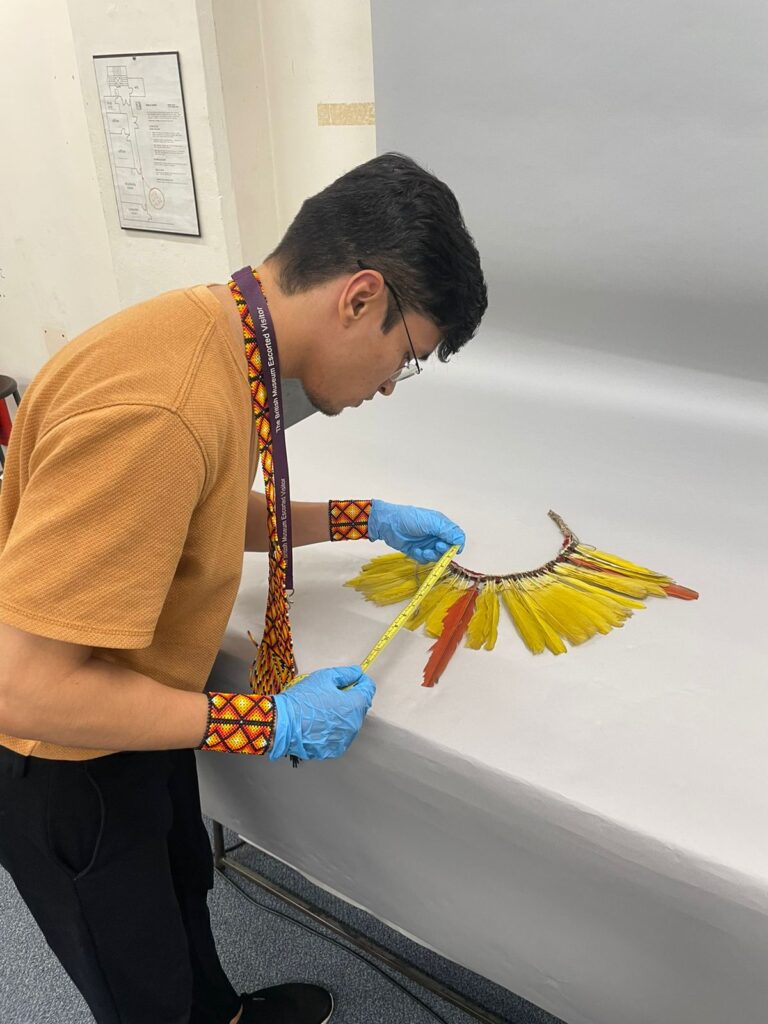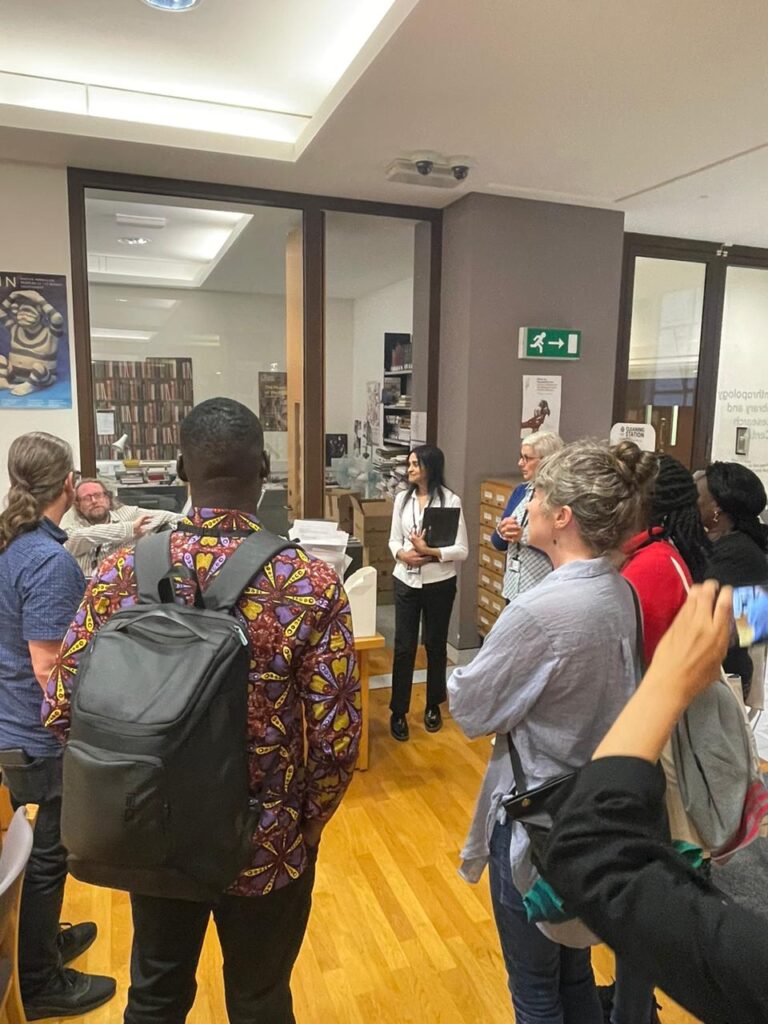Global museum with local connections (Tarisson Nawa, Brazil, ITP 2024)
Written by Tarisson Nawa, Collaborating Curator and PhD student of National Museum Brazil (Brazil, ITP 2024)
When I left my indigenous territory in the heart of the Brazilian Amazon, my leaders talked about representation. “You are a leader and you represent us,” said the chief. Representing a people who were nearly wiped out, reduced to only two individuals in the last century, is what has driven my experience in the British Museum’s International Training Programme in London. The National Museum in Brazil, where I am a collaborator and PhD student in Social Anthropology (PPGAS), also believes that native researchers can contribute to museum spaces and supported the leaders’ position.

These same leaders teach me that our body is a territory, that we are directly connected to our mother earth, and that we are in constant movement. My body-territory in motion connects to the 14 power pieces kept in the technical reserve of the Americas, Oceania, and Africa (AOA) department, where I had a close dialogue on the third day of the ITP.
In my country, there is an ongoing discussion about which narratives will be highlighted in National Museums, and it is constantly emphasized by indigenous and traditional populations that these museum narratives should be in dialogue with local museum experiences, through local leaders or community museums.

It is impossible to talk about a national narrative without connecting the power pieces to the territory they come from. In this sense, it is also impossible to talk about global human narratives without connecting them to local experiences and knowledge. During the activities of the third day, it is evident that the AOA department is concerned with connecting the British Museum’s ethnological collections to their communities of origin, which led to my involvement with the programme.
These experiences with local museums via the AOA department connect global projects with representative narratives, which I was given the responsibility to represent when I left my territory to come to London. The AOA department, particularly the Americas, also strives to treat the pieces in the British Museum with care, ensuring that the descriptions of the pieces are cataloged in a way that represents their place of origin accurately.

In the midst of this process of recounting continental history, recognizing local wisdom and knowledge helps overcome the violence that the pieces and objects experienced when crossing the ocean. Engaging with local communities is a way to acknowledge the wisdom they have to heal the wounds of these pieces or objects – which are also part of the body-territory and carry marks of pain.
On the third day, while embedded within specific departments and observing their work, I had the opportunity to meet their members and engage in dialogues with local communities in Brazil, Chile, Colombia, and Mexico. Additionally, collaborative work opportunities were presented through the Santo Domingo Centre of Excellence for Latin American Research (SDCELAR).
SDCELAR’s work aligns with current concerns, focusing on the autonomy and self-determination of communities, and their leadership in moving beyond the idea of “exploitation” to one of “dialogue,” which is strongly advocated by indigenous communities in my country. This dialogue opened the doors for me to be here, over 100 years after the first pieces from my community and the Juruá River arrived at the British Museum, allowing me to reestablish the dialogue of these 14 pieces with my community, leaders, and our struggle.
I temporarily say goodbye with these final lines, but they will be continued by my colleague from Kenya, Lilian Amwanda, who is also doing fantastic work at the Kabarnet Museum, part of the National Museums of Kenya. Her warm smile has greatly enriched our experience in this space of profound exchanges and dialogues with global knowledge. Lilian is responsible for the care and management of collections, overseeing preservation, interpretation, and exhibition, and she is a great advocate for human rights and gender equity. Lilian has much to teach us!
